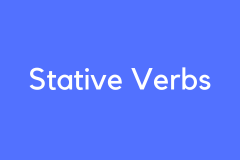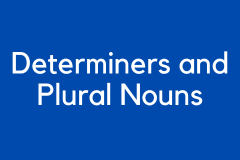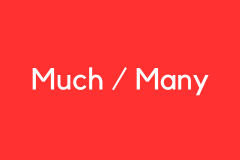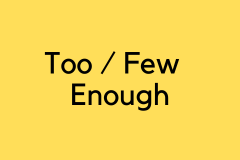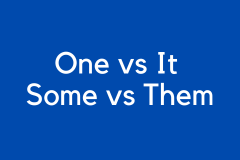Much / Many
Learn how to use the countable and ubncountable quantifiers in English.
Can you answer these grammar questions correctly?
Much / Many — Quantifiers
Point 1: We use many for countable nouns (things we can count). We use much for uncountable nouns (things we cannot count).
- Countable:
- How many bananas do we have?
- Uncountable:
- How much milk do we have?
Point 2: Many is used with plural nouns. It is often used in questions and negative statements. In positive answers, we usually say some or a few instead of "many."
- How many bananas do we have?
- ✅ We have many. (Possible, but not common)
- ✅ We have some. (More common)
- ✅ We have a few.
- ❌ We don’t have many.
- ❌ We don’t have any.
Point 3: Much is used with uncountable nouns. It is often used in questions and negative statements. In positive answers, we usually say a lot or some instead of "much."
- How much milk do we have?
- ❌ We have much. (Incorrect. Not natural in English.)
- ✅ We have a lot. (Correct and natural)
- ✅ We have some.
- ✅ We have a little.
- ❌ We don’t have much.
- ✅ We don’t have a lot.
- ❌ We don’t have any.
Point 4: In positive sentences:
- ✅ We usually say a lot or some.
- ❌ We rarely say "much" in positive sentences. (Example: We have much milk.)
- ❌ We rarely say "many" in positive sentences. (Example: We have many bananas.)
Point 5: In negative sentences and questions:
- Do you have many bananas?
- ❌ We don’t have many bananas.
- Do you have much milk?
- ❌ We don’t have much milk.

